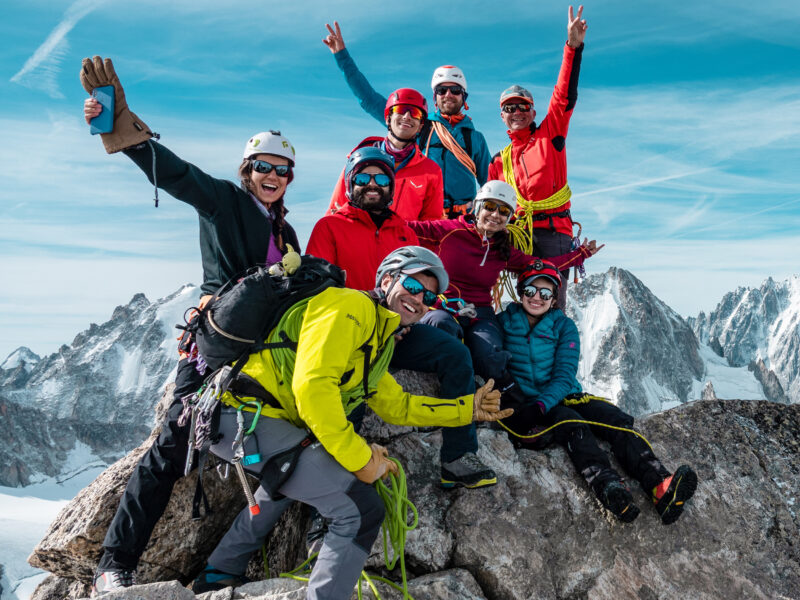BY Rami Rasamny | January 25 2024
Down Jackets vs Synthetic Jackets: Choosing the Perfect Gear

Insulating Gear for Every Adventure: A Guide to Down Jackets and Synthetic Jackets
When it comes to embarking on an adventure, whether it’s conquering the formidable peaks of Mont Blanc or scaling the majestic heights of Kilimanjaro, choosing the right jacket is paramount. In this comprehensive guide, we will compare the two main types of insulating jackets – down jackets and synthetic jackets. We will delve into their key attributes such as insulation efficiency, weight, weather resistance, durability, and price. By understanding the benefits and drawbacks of each type, you’ll be able to make an informed decision and ensure you have the perfect gear to keep you warm and comfortable during your adventure.
1. Insulation Efficiency: The Battle between Down Jackets and Synthetic Jackets

Insulation efficiency is a critical factor to consider when selecting a jacket for your adventure. Both down jackets and synthetic jackets offer unique insulation properties, but their suitability depends on the climate and conditions you will encounter.
1.1 Why Choose Down Jackets?
Down jackets are known for their superior warmth-to-weight ratio, making them ideal for cold nights in high-altitude environments like Kilimanjaro. The insulation efficiency of down jackets in extreme cold conditions is unmatched.
1.2 Why Choose Synthetic Jackets?
On the other hand, synthetic jackets excel in wet and unpredictable conditions, such as those found on Mont Blanc’s summit. They retain their insulation properties even when wet, making them essential for snowy and damp environments. Synthetic jackets are also quick-drying, which is beneficial in humid climates.
1.3 Why Choose Lightweight Down Jackets?
For adventures with milder and fluctuating temperatures, like the popular Tour du Mont Blanc trek, lightweight down jackets strike the perfect balance between insulation and breathability. They provide adequate warmth without causing overheating during strenuous activity.
2. Weight and Packability: Finding the Perfect Balance
When it comes to weight and packability, down jackets and synthetic jackets have distinct characteristics. Considering these factors is crucial, as they can significantly impact your comfort and ease of travel.
2.1 Down Jackets: The Lighter Choice
Down jackets are renowned for their lightweight nature, making them easier to carry and pack for long-distance treks like Kilimanjaro. Their compressibility allows them to take up minimal space in your backpack, leaving room for other essentials.
2.2 Synthetic Jackets: Durable Companions
While synthetic jackets tend to be slightly heavier than down jackets, they offer durability and resilience. This makes them better suited for challenging terrains and harsh, rugged environments like Mont Blanc. Though they may take up more space in your backpack, their robustness compensates for the added weight.
3. Weather Resistance: Battling the Elements
The ability of your jacket to withstand various weather conditions is crucial for your comfort and safety during your adventure. Down jackets and synthetic jackets differ in their performance when faced with wet and humid environments.
3.1 Down Jackets and Moisture
Down jackets require additional waterproofing in wet conditions. Without proper treatment, they lose their insulation properties when exposed to moisture. This makes them less effective in humid environments or during heavy rainfall.
3.2 Synthetic Jackets: All-Weather Friends
On the other hand, synthetic jackets are designed to maintain insulation even when damp. They are generally more resistant to moisture and perform consistently in varied weather conditions. Many synthetic jackets also come with water-resistant features, providing added protection against rain and snow.
4. Durability and Longevity: Investing in Quality

The durability and longevity of your jacket are crucial considerations, particularly for frequent adventurers and those tackling challenging terrains like Mont Blanc.
4.1 Down Jackets: Delicate but Long-lasting
Down jackets, while delicate, can have a longer lifespan with proper care and maintenance. They require attention to detail, including regular cleaning and storage in a dry environment. By following these guidelines, your down jacket can accompany you on many expeditions.
4.2 Synthetic Jackets: Tough and Reliable
Synthetic jackets are inherently more durable and easier to maintain. They are designed to withstand the wear and tear of frequent use. Cleaning synthetic jackets is relatively straightforward, and they often dry quickly, making them ideal for adventurers who prefer hassle-free gear.
5. Down Jackets vs Synthetic Jackets: A Price Comparison
Cost is an important consideration when selecting a jacket for your adventure. Down jackets and synthetic jackets vary in price due to factors such as materials, production costs, and brand reputation.
5.1 Cost Factors
Down jackets, with their natural materials, are generally more expensive than synthetic jackets. The higher price tag is a reflection of the quality and insulation properties offered by down.
5.2 Long-Term Investment
While down jackets may be costlier upfront, they are often a better long-term investment due to their durability and longevity. With proper care and maintenance, a high-quality down jacket can last you for many years, offsetting the initial cost.
5.3 Price Range Variability
It’s important to note that the price range for both down jackets and synthetic jackets can vary significantly based on factors such as brand, quality, and additional features. In some cases, high-end synthetic jackets can approach the cost of down alternatives, especially if they offer advanced technologies or specialized designs.
Final Thoughts: Finding Your Perfect Jacket
Choosing the right jacket for your adventure is essential for a comfortable and memorable experience. For dry, cold environments like Kilimanjaro, down jackets provide superior insulation and warmth. In wet and unpredictable conditions like Mont Blanc’s summit, synthetic jackets excel with their moisture resistance and durability. If you’re embarking on a trek like the Tour du Mont Blanc, lightweight down jackets strike a perfect balance between insulation and breathability.
Consider the climate, terrain, and specific needs of your adventure when making your decision. Remember to prioritize insulation efficiency, weight and packability, weather resistance, and durability. By selecting the perfect jacket, you’ll be well-equipped to face the elements and make the most of your adventure. So, pack your gear, strap on your boots, and embark on an unforgettable journey with the right jacket by your side.
About The Author
Rami Rasamny is the founder of Life Happens Outdoors, a premium adventure travel community dedicated to transforming lives through curated outdoor experiences. A mountaineer and entrepreneur, Rami has led teams on some of the world’s most challenging peaks, from the Alps to the Himalayas. His mission is to make adventure accessible, transformative, and safe for all who seek to push their limits and Come Back Different.
About Life Happens Outdoors
At Life Happens Outdoors, we believe in the power of nature to transform lives. As proud members of the Adventure Travel Trade Association (ATTA) and the World Travel & Tourism Council (WTTC), our team of certified guides and outdoor professionals is committed to the highest standards of safety, sustainability, and excellence.
Discover more about our story and mission on our Meet LHO page, or explore our curated adventures such as the Tour du Mont Blanc Trek, the Climb of Kilimanjaro, and Chasing the Northern Lights.














